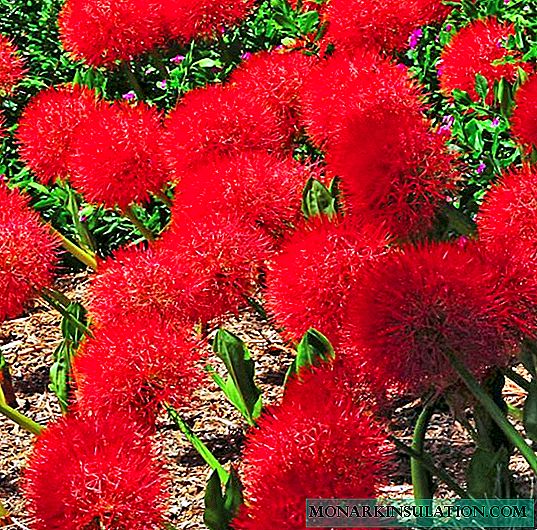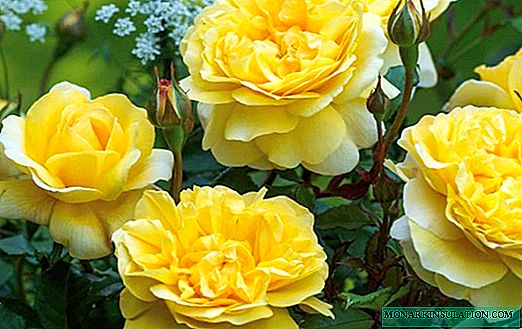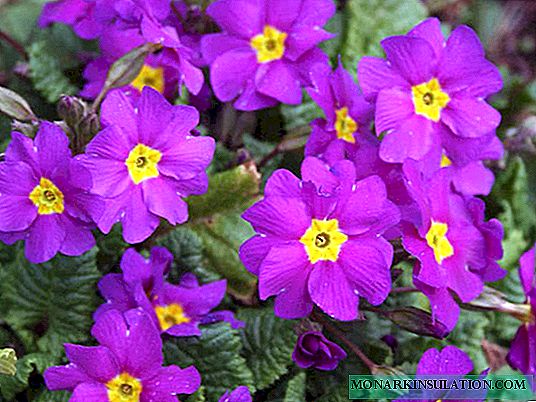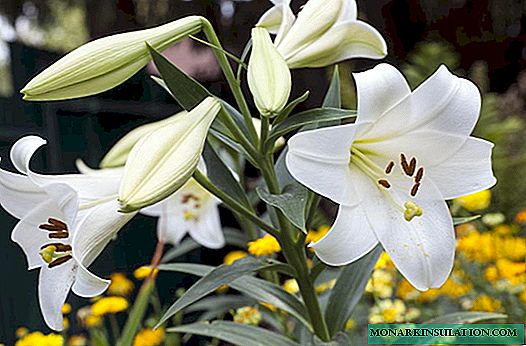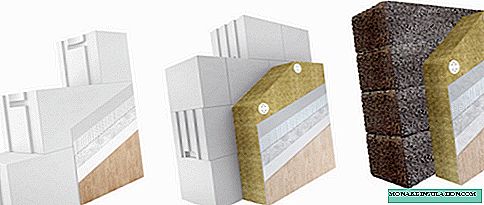
Before starting construction, each owner of the future home chooses the material from which it will be made. As a rule, owners are interested in price and strength. The modern market offers a large number of materials with different properties and costs, in which you can easily get confused. We will help you choose the most suitable option.
Which house to build?
Before starting the construction of the building, you need to determine not only the material, but also the project of the house. You can get it in the following ways:
- Contact a specialized bureau, where they will draw up a personal project for you with an estimate or offer one of the standard ones. As a rule, this is quite expensive, but allows you to get perfectly calculated material.
- Some stores offer the project for free when buying materials for construction, this is usually a large network, you will need to monitor their shares. This is not very convenient, because at the right time there may not be such an offer in the store you like.
- Find a project on the Internet: on some sites you can find something suitable for free.
Before laying the foundation of the structure, it doesn’t hurt to invite a specialist who will help you study the soil and calculate what foundation you need.
In addition, it is worth considering how many floors there will be in the house. One-story house has its own characteristics, so it is worth considering the pros and cons immediately. The benefits include the following:
- There are no stairs inside, which is much more convenient and safer, if children or pensioners live in the house, you can plan your space more efficiently.
- It’s easy to take care of the facade, because in order to climb up, enough and a stepladder.
- Mounting communications is easier, less material is needed if the area is small.
- When calculating a house 10 * 10 on the wall will take less material.
However, there are also disadvantages, which include the following:
- It is difficult to plan a room without walk-through rooms.
- The same amount of money will be spent on the roof and foundation as on the 2-story project, but the living area will be half as much.
- A large plot of land is required.
If we consider a two-story house as an option, then it is worth considering its advantages and disadvantages. The positive aspects include:
- Large selection of projects and saving space. You can build a house in 120 or more square meters. m on a small plot of land.
- Huge selection of available projects.
- Saving roofing material.
- The ability to reduce the cost of insulation.
The main disadvantages:
- It is difficult to care for the facade, since it is problematic to get to the second floor.
- Not very good sound insulation between floors.
- The house has a staircase, it takes up a lot of free space, trash and dust accumulate under it. In addition, the design is difficult to overcome by the elderly and children.
Heating
If the house is one-story, there is an opportunity to save on pipes, since the optimal shape in the diagram is spherical, heat loss, respectively, is minimal. A much more materials are spent on a two-story structure, since the cubic shape is optimal for it. And if the most economical form for a single-story house is an area of 10x10, then for two floors it will cost less than an area of 6x6 or 9x9 meters.
What to build a house from?
When choosing a material, the question arises of which one to choose: brick and wood are not only very expensive, but also quite laborious to work with. If you want to save, the decision should be made in favor of the block. However, here, too, is not so simple. There are a large number of blocks of various types.
Aerated concrete

Aerated concrete is actively used for the construction of private houses. It is a lightweight porous material with high strength and affordable cost. Consider its features:
- Aerated concrete blocks differ in strength. Depending on how many floors there are in the house, you need to choose the type of appropriate marking, the higher it is, the heavier and more expensive the material. For example, a D500 30x25x60 unit weighs approximately 30 kg. This corresponds to a volume of 22 bricks, the mass of which will be 80 kg. Using a gas block, you can save on the foundation.
- Thermal conductivity: due to the porous structure, heat is well retained inside the walls.
- Breathable walls made of natural materials. Such a house is environmentally friendly, has its own microclimate.
- Fire safety: material does not burn.
- High frost resistance: the unit is not afraid of low temperatures, their differences.
- The material is not afraid of moisture, although it does not like constant waterlogging.
- Profitability: large dimensions can significantly reduce the number of blocks used and increase the speed of construction.
- It is easy to saw, has smooth edges, almost does not need additional grinding, the walls are perfectly smooth.
- After construction, minimal shrinkage occurs, not exceeding 0.2-0.5%.
- Equal, which saves on plastering.
To connect aerated concrete blocks, special glue is most often used. Factory blocks are very smooth, deviations are not more than 1 mm, which allows you to get a perfectly flat wall. When using glue, the seams are also smooth, so you can significantly save on consumables and plaster. In addition, there will be no heat loss, since the masonry seam will not have holes. The glue layer is thin, the work is quite simple; how exactly can be seen in the video. The principle is simple: the glue is applied to the blocks, and they are placed on top of each other with an offset. Glue is a powdery mixture, which includes quartz sand, polymer and natural additives, cement.
Expanded clay block
Wall blocks made of this material are in many ways a traditional solution, since they are used much more often than alternatives and are known quite well to many builders and homeowners. They are used for the construction of not only private houses, but are also used by some developers when creating high-rise buildings. The weight of such a unit is not very large, the optimal size allows you to work comfortably with it, and the affordable price can reduce construction costs.
The block is made of a mixture of concrete and expanded clay, has a good ability to retain heat and high strength. Its advantages:
- Affordable price.
- Light weight - an average of 15 kg.
- Durability.
- The ability to retain heat and isolate sound.
Characteristics and properties of expanded clay blocks:
- Density - 700-1500 kg / m3.
- Easy to plaster.
- Resistant to environmental influences.
- Resistant to frost, moisture, other climatic conditions.
- It does not burn and is not afraid of moisture.
- Suitable for creating a foundation.
Disadvantages:
- Unaesthetic appearance, the blocks are imperfect, therefore, they require plastering or additional finishing.
- It is difficult to saw and fit.
Silicate block

The silicate block is in many ways similar to aerated concrete, but does not have such voids. It is made of concrete, lime and sifted sand without the use of a blowing agent. The mixture is pressed using high pressure and then calcined in an oven. This material is widely applicable for low-rise and high-rise construction, is able to well contain noise.
The main advantages include:
- High strength, durability. From a 25 cm thick silicate block, 9-story houses can be built.
- Not afraid of fire.
- Provides good sound isolation.
- Not affected by fungus and mold with proper care.
- Breathable.
- Almost perfectly flat. You can not plaster (enough putty).
- Space saving.
- High laying speed and minimum finishing work inside.
Disadvantages:
- A lot of weight, so the structure will require a strong foundation.
- If the climate is cold enough, the silicate block will have to be seriously insulated: with a block thickness of 250 mm, a heater with a thickness of 130 mm is needed.
- If the room is wet, you need waterproofing, so for basements and bathrooms this is not the best solution.
Table: Comparison of prices per m2
| Specifications | Expanded clay block | Silicate block | Aerated concrete |
| Heat Conductivity, W / m2 | 0,15-0,45 | 0,51 | 0,12-0,28 |
| Frost resistance, in cycles | 50-200 | 50 | 10-30 |
| Water resistance,% | 50 | 17 | 100 |
| Mass, 1m2 of wall | 500-900 | 300 | 200-300 |
| Strength, kg / cm2 | 25-150 | 162 | 5-20 |
| Density, kg / m3 | 700-1500 | 1400 | 200-600 |
| Prices | From 1980 rubles per cube | From 1250 rubles | From 1260 rubles per cube |
Which house to build, you choose, the options presented have their advantages and disadvantages, but they all differ in strength and durability. After weighing the pros and cons, you can precisely decide which option is right for you.





